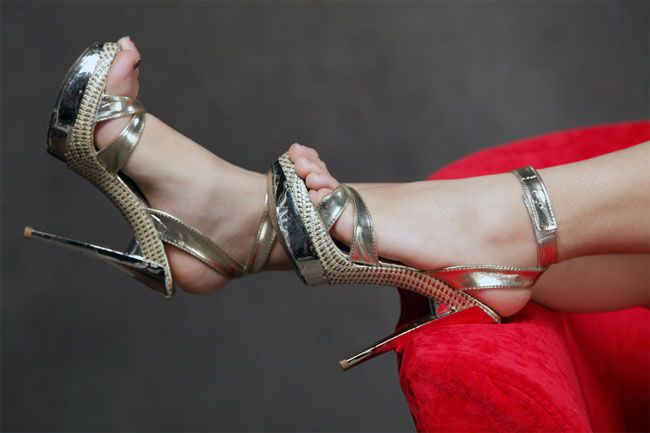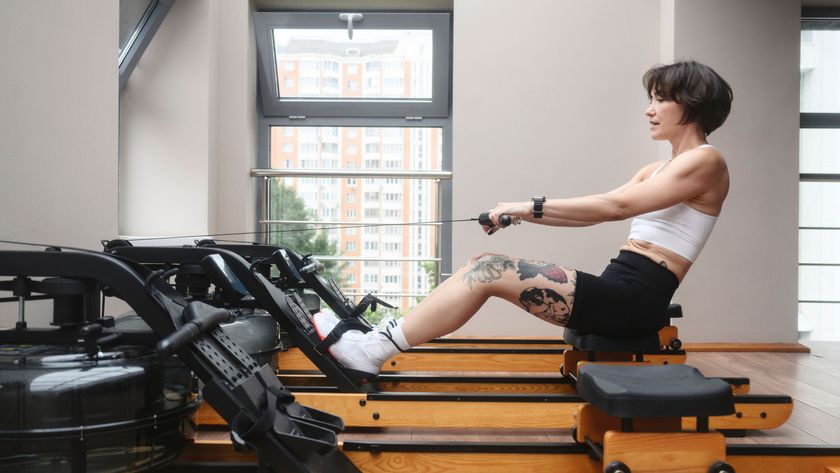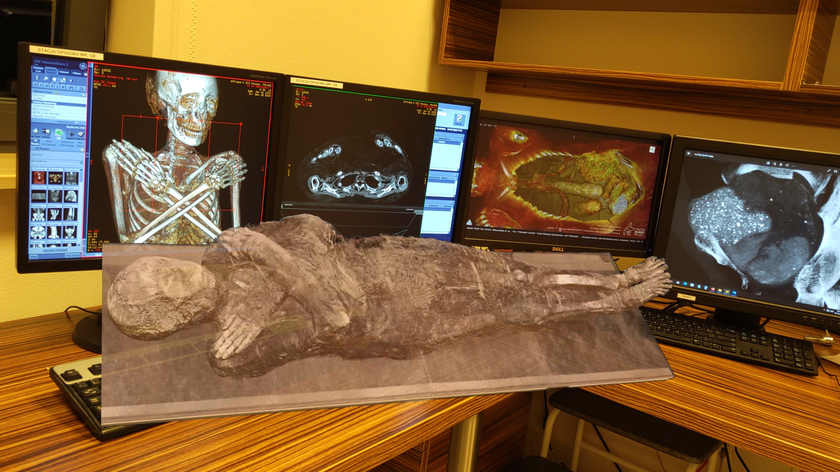High Heels Reshape Leg Muscles, Create Pain When Not Worn

Women who wear high heels daily might be signing up for more than a little foot pain. Habitual high-heel wearing can lead to changes in the calf muscle and tendons, according to a new study.
So much so that these women actually experience discomfort when they walk around sans stilettos.
The high-heel habit can cause fibers in the calf muscle to shorten, and the Achilles tendon, which connects the calf muscle to the bone, to stiffen and become thicker. While this set-up doesn't pose problems when the heel is propped up, it can lead to discomfort when standing or walking around flat-footed because the muscle and tendon are stretched beyond their normal range of movement..
"In a way, the system has adapted to this new position," said study researcher Marco Narici of Manchester Metropolitan University in the United Kingdom. "When they wear high heels the muscles feel more comfortable."
The results will be published July 16 in the Journal of Experimental Biology.
Measuring muscles
When people put on high heels, their ankles are raised and their calf muscles are held in a shortened (contracted) position. Scientists know that when people place their muscles in a shortened position for a long period of time — such as in a plastic cast — the muscle literally becomes shorter, Narici said.
Sign up for the Live Science daily newsletter now
Get the world’s most fascinating discoveries delivered straight to your inbox.
Narici wondered if constantly wearing high heels could also cause muscle shortening.
"I thought that: women wearing high heels were doing an experiment for us without knowing it, so all we had to do was recruit them and test them," he told LiveScience.
In addition, there is anecdotal evidence from the 1950s that secretaries experienced discomfort when they took off their high heels and walked barefoot, Narici said, which also suggested perpetually wearing high heels causes changes.
The study participants included 11 women (average age 43) who had worn stiletto high heels (at least 2 inches, or 5 centimeters high) for five days a week for two years or more. Most of the subjects said they felt discomfort when they were standing barefoot. A control group of nine women who did not regularly wear high heels was also included.
Narici and his colleagues first measured the size of the women's calf muscles using magnetic resonance imaging (MRI). However, they didn’t find any differences in muscle volume between the two groups.
Next, they used ultrasound to measure the length of the calf muscle fibers, finding they were 13-percent shorter in high-heel wearers compared with the control group.
Having shorter fibers should affect how the muscle contracts — shorter fibers should generate less force and make walking less efficient in these women. But the researchers couldn't find any differences between the two groups in terms of how the calf muscle contracts.
An examination of the Achilles tendon showed the tendons of high-heel wearers were thicker, and thus stiffer, than those of non-high heel wearers.
The thicker tendons counterbalance the shorter muscle fibers and allow the muscle to behave normally, Narici said. But the combined effect of the thicker tendon and the shorter fibers is the likely reason behind the soreness felt when high-heel wearers ditch their stilettos..
High heels aren't the only footwear risk. A separate study in 2008 found that constantly wearing flip-flops alters how you walk, changing the gait in subtle ways that can lead to problems and pain in the sole, heel and ankle.
Ditch the heels?
Narici doesn't think the results mean women should give up wearing high heels. But he recommends stretching exercises after a day of wearing high heels to prevent the muscle fibers from shortening.
Currently, Narici and his colleagues are investigating whether thicker Achilles tendons make running less efficient.
Narici conducted his work with Robert Csapo of the University of Vienna, Austria, and Olivier Seynnes and Costis Maganaris of Manchester Metropolitan University.
The study was funded by Manchester Metropolitan University and the University of Vienna.

Rachael is a Live Science contributor, and was a former channel editor and senior writer for Live Science between 2010 and 2022. She has a master's degree in journalism from New York University's Science, Health and Environmental Reporting Program. She also holds a B.S. in molecular biology and an M.S. in biology from the University of California, San Diego. Her work has appeared in Scienceline, The Washington Post and Scientific American.











